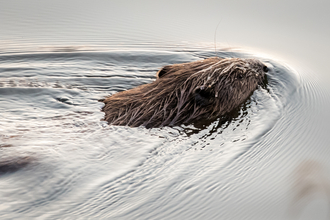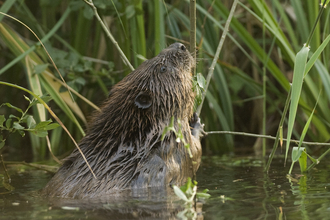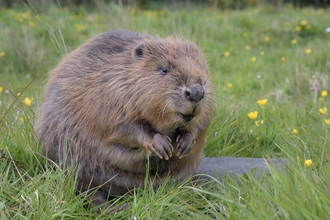Why The Wildlife Trusts believe in beavers
(C) David Parkyn
For hundreds of years, the furry, paddle-tailed figure of the Eurasian beaver has been missing from the rivers of the UK. Once widespread, they were hunted to extinction for their fur, meat and scent-glands (used for making perfume). The last wild British beaver died in Scotland in the 16th century.
Beavers are a keystone species which means that they play a crucial role in how an ecosystem functions. By building dams, digging ditches and coppicing trees, beavers can alter their surroundings in a big way – and in a way that has many benefits for people and wildlife. Beavers can create large areas of water-retaining wetland, slowing the flow of streams and rivers and protecting the land downriver from flooding, as well as reducing silt and improving water quality. These restored wetlands also provide essential habitat for a wealth of plants and animals.
With these benefits, it’s easy to see why there is so much interest in bringing beavers back to the UK. The Wildlife Trusts are leading partnerships of government agencies, farmers, other charities and universities, working together to bring back this amazing mammal, and, importantly, to monitor their impact on the landscape. Below are some of the benefits of beavers we are already seeing across the UK.
©David Parkyn/Cornwall Wildlife Trust
Getting into deep water
Beavers by their very nature, love deep water. They are timid animals and require deep ponds as a route of escape. By increasing the capacity of the land to store water, beavers create a more consistent outflow below their dams.
Beaver activity in the Scottish Beaver Trial, led by Scottish Wildlife Trust and the Royal Zoological Society of Scotland, has increased the capacity of the land to hold water. This could mean that flood risks downstream are lower during storm events, and that more water will be available during droughts.
Beaver and co.
The mix of wetland habitats that beavers create helps other wildlife to thrive, including otters, water voles, birds, dragonflies and fish.
Thanks to the work of the beavers in Kent Wildlife Trust’s Ham Fen Beaver Project, wetland species are returning after long absences. They’ve seen the first water voles and otters in decades, and a rare plant – the few-flowered spike rush has been recorded for the first time in over a century.
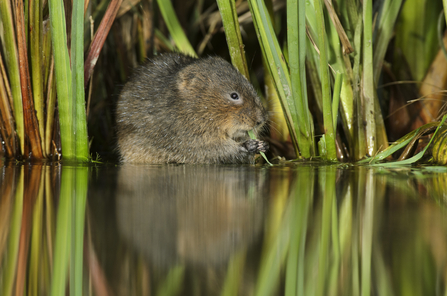
Water vole ©Terry Whittaker/2020VISION
Crystal clear
As beaver dams slow the flow of water, sediment and nutrients are deposited in ponds. This returns sediment and nutrients to the land and improves the quality of the water flowing out of the site.
This effect has been demonstrated by the Devon Beaver Project, run by Devon Wildlife Trust. Here scientists have found that during storms and heavy rainfall, each litre of surface water leaving the beaver-modified site contained three times less sediment than the water entering the site. This makes less work for water companies having to clean up water before we can drink it.
People are fascinated by beavers
Beavers are charismatic animals, attracting nature lovers and wildlife enthusiasts. The presence of beavers provides an opportunity for nature tourism, giving people the chance to connect with nature through the chance to spot this magnificent mammal.
The Cornwall Beaver Project is situated in a wooded valley on a working dairy farm in mid-Cornwall. Over 1000 people have been shown around the Cornwall Beaver Project so far, with Woodland Valley farm seeing increasing bookings for residential stays from schools, colleges and universities.
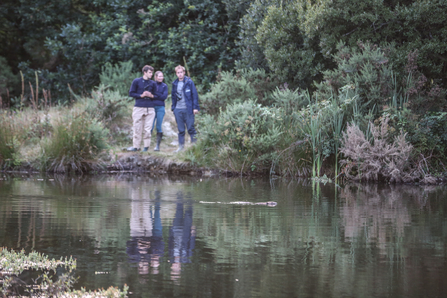
Beaver watching in Cornwall ©Clare James/Cornwall Wildlife Trust
The future of UK beavers
A number of Wildlife Trusts are undertaking projects and scientific studies to develop a greater understanding of the impacts of beavers on the modern landscape.
A new report, The Wildlife Trusts’ Beaver Reintroductions, gives an overview of some of the work underway across The Wildlife Trust movement. Click here to read more.
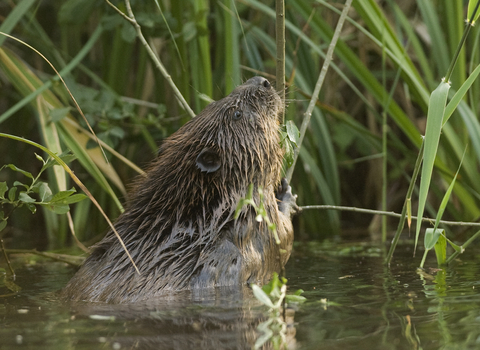
Beaver at Ham Fen ©Terry Whittaker
The Wildlife Trusts' Beaver Reintroductions
An 8-page report about the Wildlife Trust beaver reintroduction projects around the UK.


